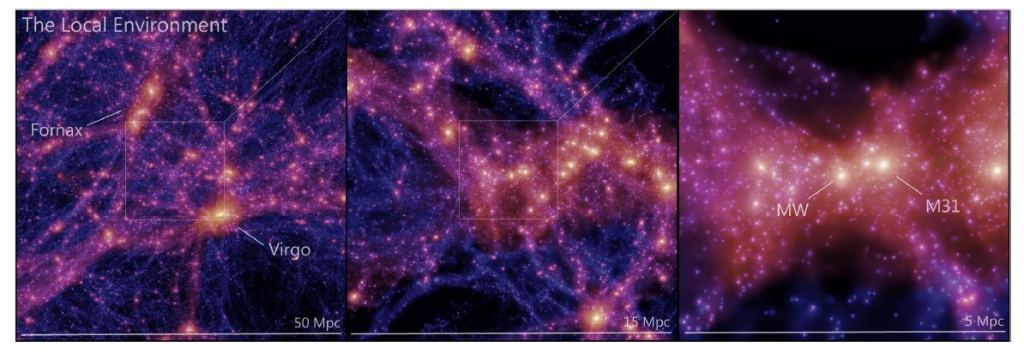Something huge lurks in the shadows of the Universe. Known as the Great Attractor, it is causing the Milky Way and all the surrounding galaxies to rush towards it. We would normally have a better understanding of this situation, except for the fact that the Great Attractor happens to lie in the direction behind the galactic bulge, which makes it difficult for us to observe.
A team of astronomers have performed a new infrared survey of the region behind the bulge, and they have found yet another large galaxy cluster. Their work is helping to paint a more complete portrait of the environment of the Great Attractor. All galaxies in the Universe are in motion.
At the very largest scales this motion is dominated by what astronomers call the Hubble flow, which is just the general expansion of the Universe. This causes most galaxies to recede away from each other. But at anything less than fully cosmological scales, there can be extra motion on top of that.
For example, the Milky Way and the Andromeda galaxies are on a collision course, and they will merge together in about 5 billion years. In addition to that merger, our two galaxies, along with all the other galaxies in our local group, are rushing towards the Virgo cluster, which is the nearest cluster of galaxies to us. But it doesn’t stop there.
The local group, the Virgo cluster, and all the other groups and clusters in the nearby region of space are headed in one direction together. Astronomers call the center point of this movement the Great Attractor, because it seems to be the largest source of gravity in our local cosmological environment. It just so happens by pure dumb luck that the Great Attractor sits in the direction of our sky behind the galactic bulge.
This region of the sky is called the Zone of Avoidance, because it’s very difficult for optical telescopes to pierce the thick clouds of dust and gas in this region to develop a clear map of what’s behind it. Our only hope is to use other wavelengths of light that can penetrate gas and dust more easily. One of those wavelengths is infrared.
But infrared surveys in this regime is a very difficult task, and so our maps in this region of the universe are incomplete. The team of astronomers have attempted a new survey of the region with the Gemini South Telescope, especially targeting a half dozen galaxies within the Zone of Avoidance. They found that the galaxies in their survey were likely to be associated with each other.
It’s the first evidence we have that these galaxies might be a member of a much larger cluster of galaxies. This cluster of galaxies isn’t the Great Attractor itself, but it is certainly associated with it. Further observations will hopefully paint a more thorough picture of this new galaxy cluster and its environments, and determine its relationship to the Great Attractor.
The post Chipping Away at the Great Attractor Mystery. Another Galaxy Cluster Found Behind the Milky Way’s Disk appeared first on Universe Today. .
From: universetoday
URL: https://www.universetoday.com/158434/chipping-away-at-the-great-attractor-mystery-another-galaxy-cluster-found-behind-the-milky-ways-disk/



